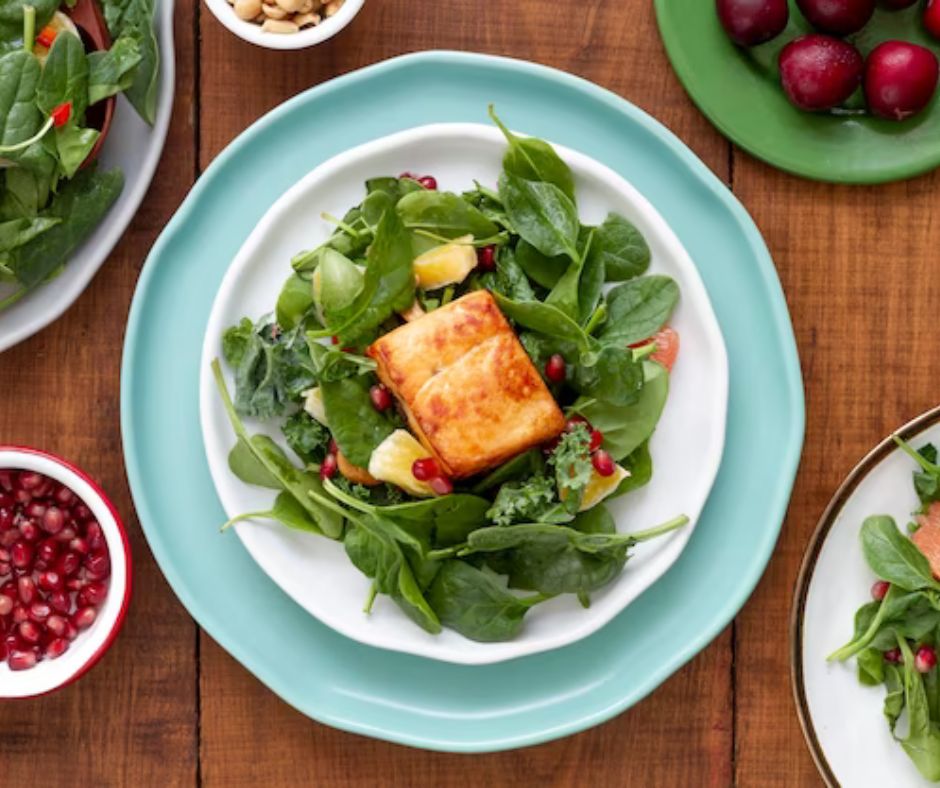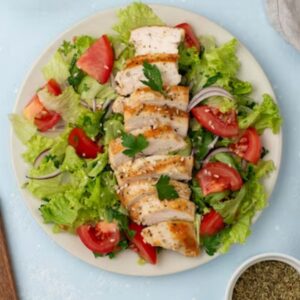
10 Easy Tips for Building a Balanced Plate
Table of Contents
- Introduction
- The Importance of a Balanced Plate
- Tip 1: Incorporate a Variety of Colors
- Tip 2: Choose Lean Protein Sources
- Tip 3: Include Whole Grains
- Tip 4: Load Up on Fruits and Vegetables
- Tip 5: Don’t Forget Healthy Fats
- Tip 6: Mindful Portion Control
- Tip 7: Hydrate with Water
- Tip 8: Limit Added Sugars and Sodium
- Tip 9: Cook at Home More Often
- Tip 10: Be Adventurous with Herbs and Spices
- Healthy Recipes for a Balanced Plate
- Conclusion
Introduction
Eating a well-balanced diet is essential for maintaining good health and overall well-being. One of the key aspects of a healthy eating plan is building a balanced plate. By incorporating a variety of nutrients and making mindful choices, you can ensure that every meal provides the nourishment your body needs. In this article, we will explore ten easy tips to help you create a balanced plate that is not only nutritious but also delicious.
The Importance of a Balanced Plate
A balanced plate is a valuable tool for maintaining a healthy lifestyle. It helps provide your body with the necessary nutrients, vitamins, and minerals it needs to function optimally. By including a variety of food groups in appropriate portions, you can promote energy levels, support proper digestion, and enhance your overall well-being.
Tip 1: Incorporate a Variety of Colors
When it comes to building a balanced plate, variety is the key. Aim to include a rainbow of colors in your meals by incorporating different fruits and vegetables. Each color represents a unique set of vitamins, minerals, and antioxidants that offer numerous health benefits. For instance, vibrant red and orange produce, such as tomatoes and carrots, are rich in vitamin C and beta-carotene, which promote healthy skin and boost the immune system.
Tip 2: Choose Lean Protein Sources
Protein is an essential macronutrient that plays a crucial role in building and repairing tissues, producing enzymes and hormones, and supporting a healthy immune system. When selecting protein sources for your plate, opt for lean options like skinless poultry, fish, beans, and tofu. These choices provide ample protein without excess saturated fats, helping you maintain a healthy weight and reduce the risk of heart disease.
Tip 3: Include Whole Grains
Whole grains are an excellent source of complex carbohydrates, dietary fiber, and essential nutrients. They provide sustained energy, promote digestive health, and can even lower the risk of chronic diseases like diabetes and heart disease. Incorporate whole grains such as brown rice, quinoa, whole wheat bread, and oats into your meals to add texture, flavor, and nutritional value to your plate.
Tip 4: Load Up on Fruits and Vegetables
Fruits and vegetables are the superheroes of a balanced plate. They are low in calories and packed with vitamins, minerals, and fiber. Aim to fill half of your plate with a variety of colorful produce. Whether you enjoy them raw, steamed, roasted, or blended in a smoothie, these natural wonders will provide you with essential nutrients and antioxidants that promote optimal health and well-being.
Tip 5: Don’t Forget Healthy Fats
Contrary to popular belief, not all fats are bad for you. In fact, healthy fats are an essential part of a balanced diet. Include sources of unsaturated fats such as avocados, nuts, seeds, and olive oil in your meals. These fats support brain function, protect your heart, and help your body absorb fat-soluble vitamins. Just remember to consume them in moderation, as they are higher in calories.
Tip 6: Mindful Portion Control
Portion control is a vital aspect of building a balanced plate. It ensures that you consume appropriate amounts of each food group without overeating. Use visual cues like your hand or measuring cups to gauge portion sizes. Strive to fill your plate with a balanced combination of protein, whole grains, fruits, vegetables, and healthy fats, and avoid oversized portions that can lead to weight gain and discomfort.
Tip 7: Hydrate with Water
Staying properly hydrated is essential for overall health. Water is the best choice for quenching your thirst and maintaining hydration. Make it a habit to drink water throughout the day, and include it with your meals to help aid digestion and keep your body functioning optimally. Avoid sugary beverages and excessive caffeine, as they can lead to dehydration and contribute to weight gain.
Tip 8: Limit Added Sugars and Sodium
Excessive consumption of added sugars and sodium can have detrimental effects on your health. When building a balanced plate, be mindful of hidden sources of sugar and sodium in processed foods. Opt for whole, unprocessed foods whenever possible and flavor your meals with herbs, spices, and natural ingredients. This way, you can reduce your intake of unhealthy additives and enhance the flavors of your dishes.
Tip 9: Cook at Home More Often
Cooking at home allows you to have full control over the ingredients and cooking methods used in your meals. It empowers you to make healthier choices and experiment with flavors while spending quality time with loved ones. By cooking at home more often, you can reduce your reliance on takeout and processed foods, leading to a more balanced plate and improved overall health.
Tip 10: Be Adventurous with Herbs and Spices
Herbs and spices are the secret to elevating the flavors of your meals without adding excessive calories or sodium. Experiment with a variety of herbs like basil, cilantro, and rosemary, and spices such as turmeric, cumin, and paprika. These additions not only enhance the taste of your dishes but also provide anti-inflammatory and antioxidant properties, contributing to a well-rounded and nutritious plate.
Healthy Recipes for a Balanced Plate

Recipe 1: Grilled Chicken Salad
Ingredients:
- Grilled chicken breast
- Mixed greens
- Cherry tomatoes
- Cucumber
- Red onion
- Avocado
- Olive oil and balsamic vinegar (dressing)
Instructions:
- Grill the chicken breast until cooked thoroughly.
- In a large bowl, combine the mixed greens, cherry tomatoes, cucumber, red onion, and avocado.
- Slice the grilled chicken breast and add it to the salad.
- Drizzle with olive oil and balsamic vinegar for a delicious, balanced dressing.
- Toss the salad gently to combine all the ingredients.
- Serve and enjoy!
Recipe 2: Quinoa and Roasted Vegetable Bowl
Ingredients:
- Cooked quinoa
- Roasted vegetables (e.g., bell peppers, zucchini, eggplant)
- Spinach or kale
- Chickpeas
- Feta cheese (optional)
- Lemon tahini dressing
Instructions:
- Preheat the oven and roast the vegetables until tender and slightly caramelized.
- In a bowl, combine cooked quinoa, roasted vegetables, spinach or kale, and chickpeas.
- If desired, sprinkle some crumbled feta cheese on top.
- Drizzle with lemon tahini dressing for a flavorful touch.
- Toss everything together to ensure even distribution of flavors.
- Serve the quinoa and roasted vegetable bowl as a nutritious and satisfying meal.
Recipe 3: Baked Salmon with Brown Rice and Steamed Broccoli
Ingredients:
- Salmon fillet
- Brown rice
- Steamed broccoli
- Lemon wedges
- Fresh dill (optional)
- Salt and pepper to taste
Instructions:
- Preheat the oven and bake the salmon fillet until cooked through.
- Cook the brown rice according to the package instructions.
- Steam the broccoli until tender.
- Place the baked salmon on a plate, along with a serving of brown rice and steamed broccoli.
- Squeeze fresh lemon juice over the salmon for added zest.
- Garnish with fresh dill, salt, and pepper to taste.
- Enjoy this delicious and nutrient-rich meal.
Conclusion
In summary, building a balanced plate is an essential step toward achieving a healthy and nourishing diet. By following the ten easy tips outlined in this article, you can create meals that are not only visually appealing but also packed with essential nutrients. Remember to incorporate a variety of colors, choose lean protein sources, include whole grains, load up on fruits and vegetables, and don’t forget healthy fats. Practice mindful portion control, hydrate with water, limit added sugars and sodium, cook at home more often, and be adventurous with herbs and spices. By incorporating these tips into your daily routine, you can enjoy a well-rounded, flavorful, and nutritious plate.
FAQ (Frequently Asked Questions)
Q: Can I include dairy products in a balanced plate? A: Yes, dairy products can be a part of a balanced plate. Opt for low-fat or non-fat options like skim milk, yogurt, and cheese, and consume them in moderation.
Q: How can I make my meals more flavorful without adding excessive salt? A: You can enhance the flavors of your meals by using herbs, spices, and natural ingredients like garlic, lemon juice, vinegar, and citrus zest. These additions provide a burst of flavor without relying on excessive salt.
Q: Is it necessary to follow a specific diet plan to build a balanced plate? A: No, building a balanced plate is about incorporating a variety of nutritious foods from different food groups. It doesn’t require following a specific diet plan. Instead, focus on making mindful choices and including a diverse range of foods in appropriate portions.
Q: Can I indulge in treats occasionally while still maintaining a balanced plate? A: Absolutely! Occasional treats can be enjoyed as part of a balanced diet. Just remember to consume them in moderation and prioritize nutrient-dense foods for the majority of your meals.
Q: Can I personalize the recipes provided to suit my dietary preferences or restrictions? A: Yes, feel free to customize the recipes to suit your dietary preferences or restrictions. Substitute ingredients or adjust seasonings according to your needs while keeping the overall balance of the plate in mind.
Remember: “Nourish your body, nourish your soul. Build a balanced plate and let your wellness glow!” Feel free to comment and share your own healthy recipes.

